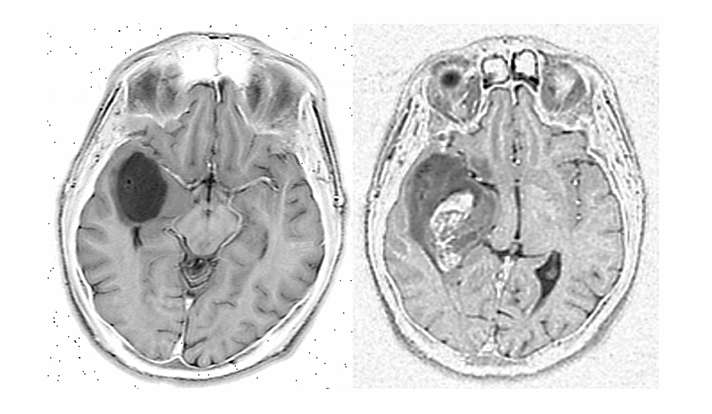Research team tracks twists and turns on the road to malignancy

Gliomas can begin as benign growth in brain tissue but almost all eventually morph into malignant cancers called GBMs. Despite medical and surgical advances, GBMs remain one of the most deadly cancers in humans.
In a comprehensive genomic study of gliomas that progressed into GBMs, an international team led by Yale Cancer Center researchers discovered the mechanisms that cause this transformation, findings that have implications about how the disease is treated.
The study was published online on Nov. 30 in Nature Genetics.
Hanwen Bai, a doctoral student in the laboratory of Dr. Murat Günel, the Nixdorff-German Professor and chair of the Department of Neurosurgery, as well as professor of neurobiology and genetics at the Yale School of Medicine, focused on 41 patients with benign gliomas, who developed—in some cases decades later—malignant tumors. By comparing the genetic makeup of the malignant tumors with that of the benign ones, researchers were able to directly identify the mechanisms underlying glioma progression. They found alterations of large chromosomal fragments, gene expression changes, and epigenetic abnormalities each contributed to malignant glioma progression.
"These abnormalities work synergistically to stimulate cancer growth while inhibiting differentiation," said Bai. "In a word, they lock cancer cells in a perpetually self-renewing state, like stem cells."
In addition, researchers also found gliomas gain abnormalities but also lose some on the way to malignancy.
"This is of clinical importance," said Günel, the senior author of the paper. "Until now, we had an incomplete picture of how a so-called 'benign' brain tumor turns into one of the most malignant cancers. Our study allows us to have a complete picture, identifying novel treatment targets based on our new fundamental understandings at the molecular level. We are already carrying these findings over to the clinic to give precise therapies based on the genomic make-up of individual tumors."
More information: Hanwen Bai et al. Integrated genomic characterization of IDH1-mutant glioma malignant progression, Nature Genetics (2015). DOI: 10.1038/ng.3457














